This is one of my favourite bridges in Paris. Spanning the River Seine, Pont Alexandre III dates back to 1900 and is reminiscent of the Belle Epoque era. Nowadays the city’s most ornate bridge connects the Grand and Petit Palais to the Hôtel des Invalides. Let’s have a closer look at the bridge’s history and decorative features.
Why was Pont Alexandre III built?
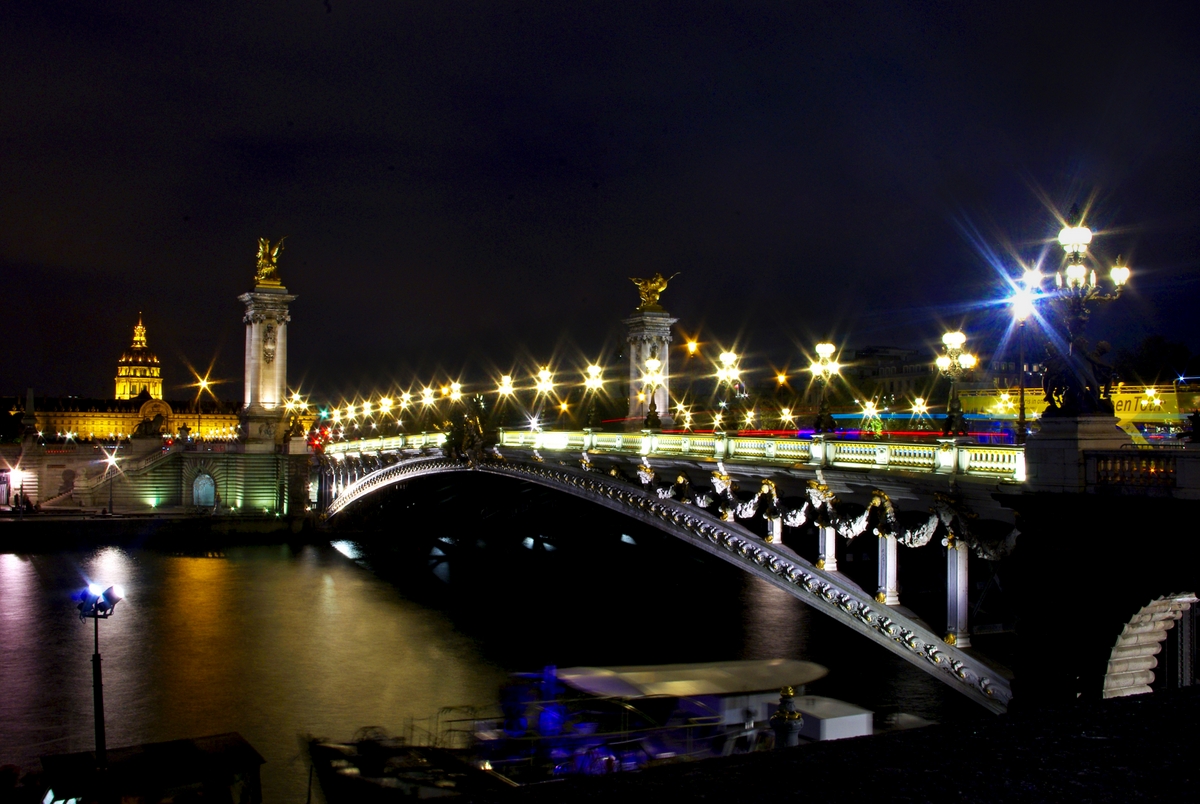
Pont Alexandre III was built in the same period as the Grand and Petit Palais, in time for the 1900 World Exhibition.
Russian emperor Nicholas II himself laid the first stone on the 7th of October 1896, in the presence of French President Félix Faure.
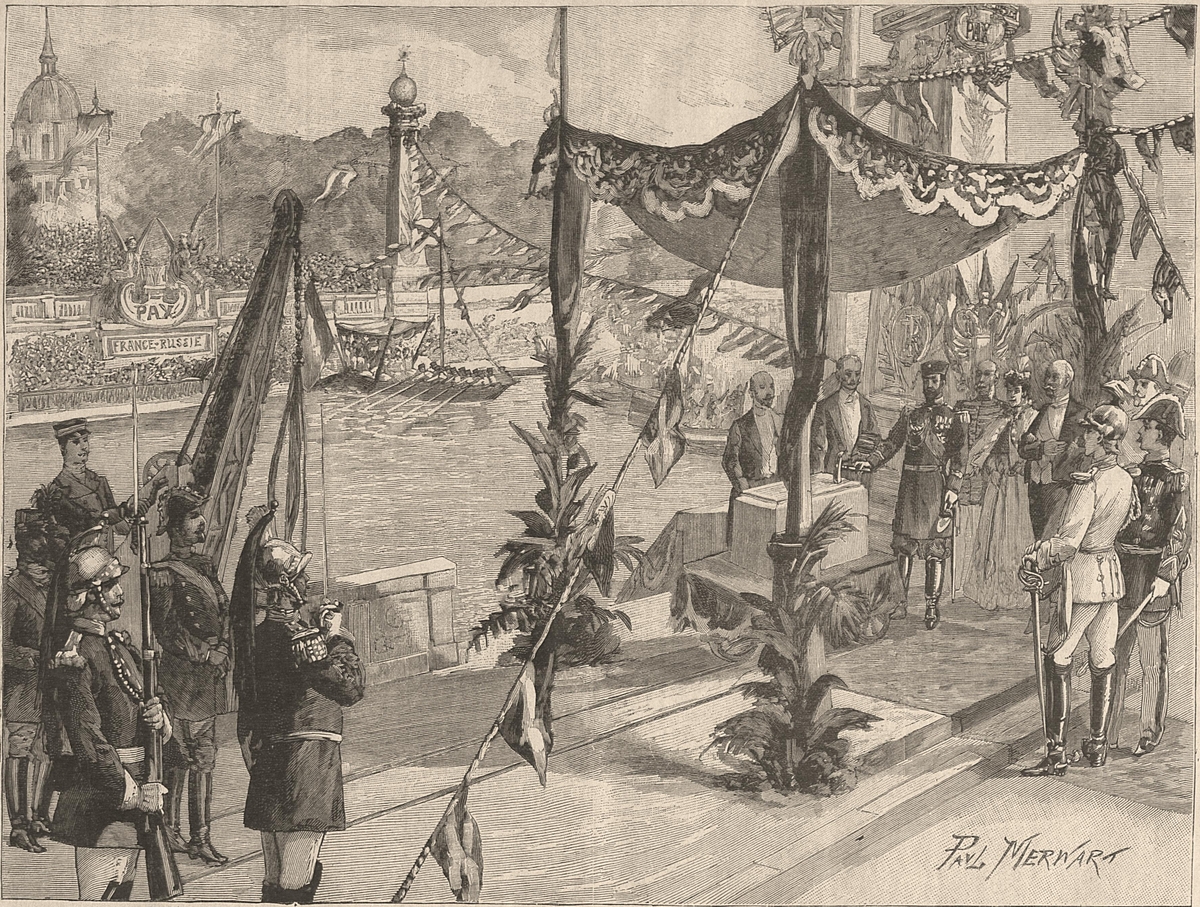
Franco-Russian friendship and alliance
The new bridge symbolises the Franco-Russian friendship and the alliance signed between the two nations (Tsar Alexandre III and French President Sadi Carnot) in 1891.
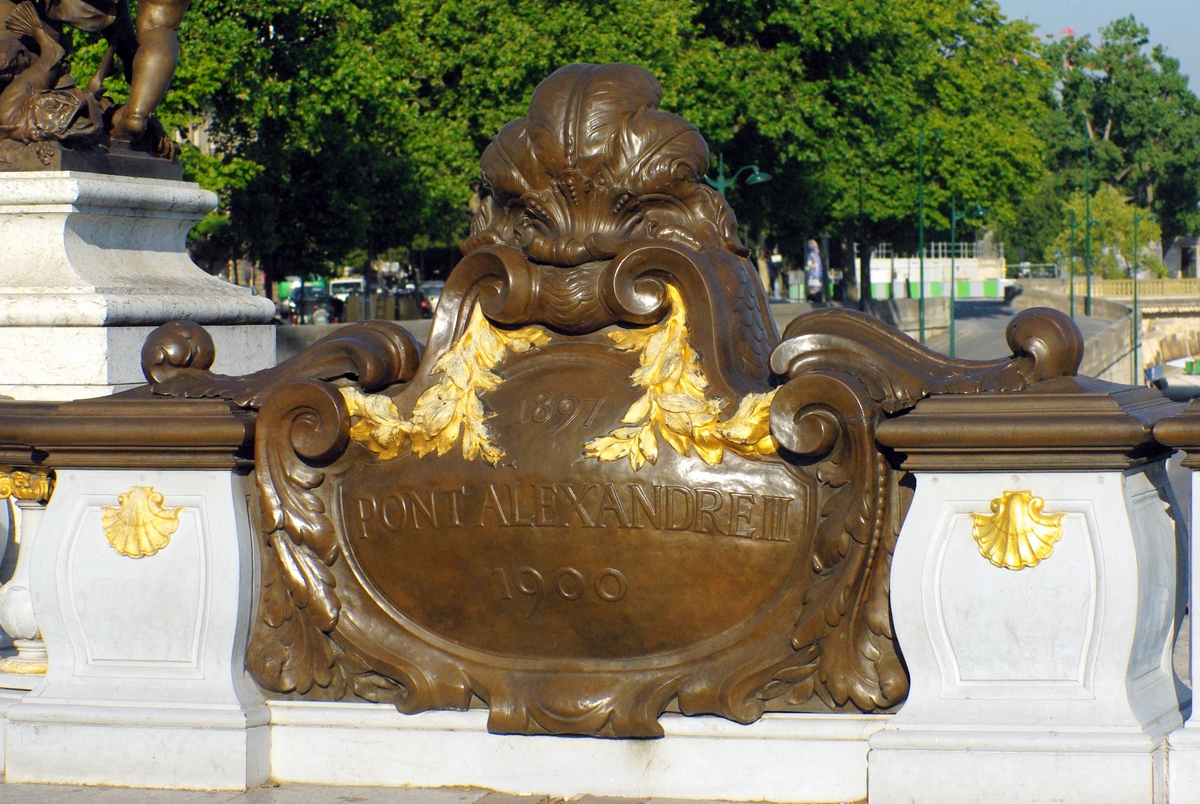
A commemorative inscription on a column (Right Bank) reads:
“Le 14 avril 1900, Émile Loubet président de la République Française a ouvert l’exposition universelle et inauguré le pont Alexandre-III”
The 14th April 1900, French President Emile Loubet opened the World Exhibition and inaugurated the Alexandre III bridge.
In fact, the sumptuous bridge was dedicated to the Tsar’s father, Alexander III (1845-1894).
In the same political spirit, Nicholas II of Russia commissioned the Trinity Bridge in Saint-Petersburg (Russia). The French firm Société de Construction des Batignolles was completed in 1903, in time for the 200th anniversary of Saint Petersburg.
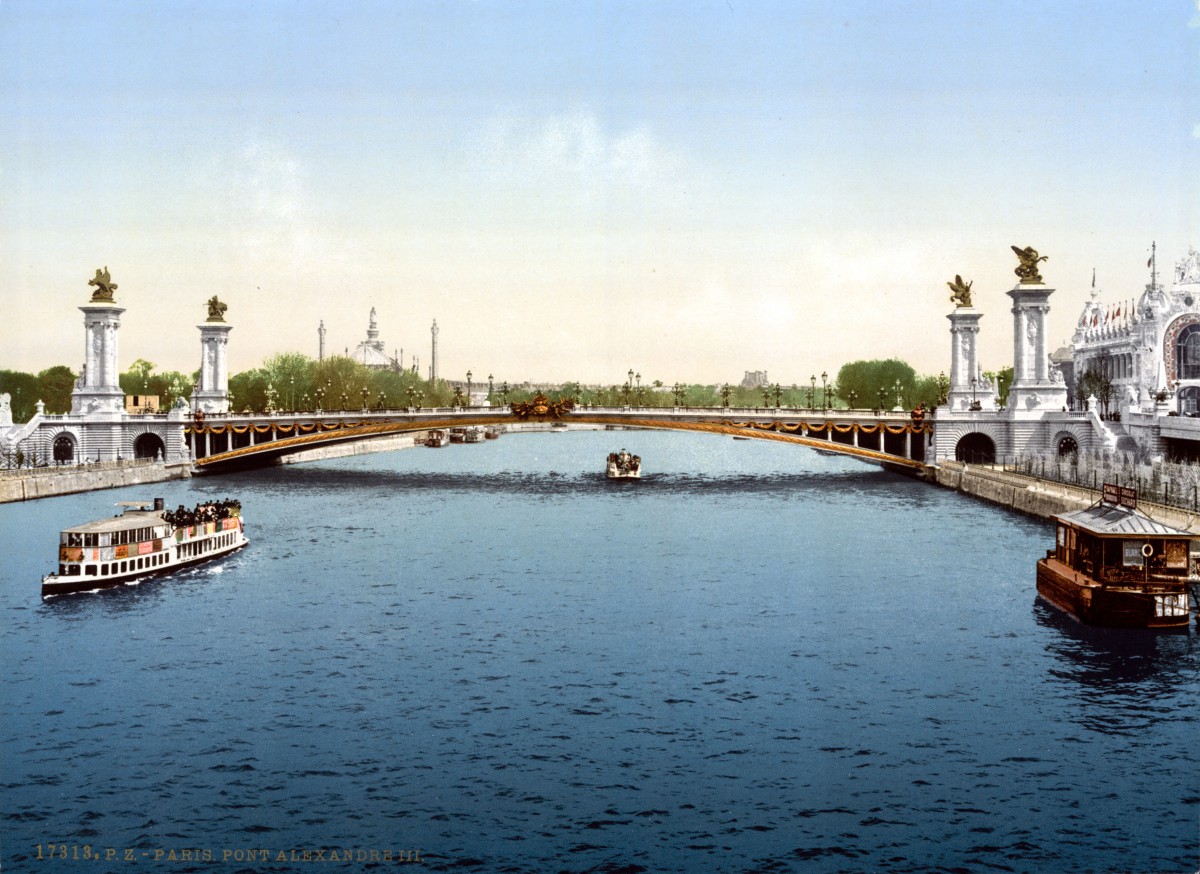
The bridge connects the tree-lined street of Cours-la-Reine (8th arrondissement) and Quai d’Orsay (7th arrondissement). On the Right Bank continues Avenue Winston Churchill, which gives access to the Grand and Petit Palais.
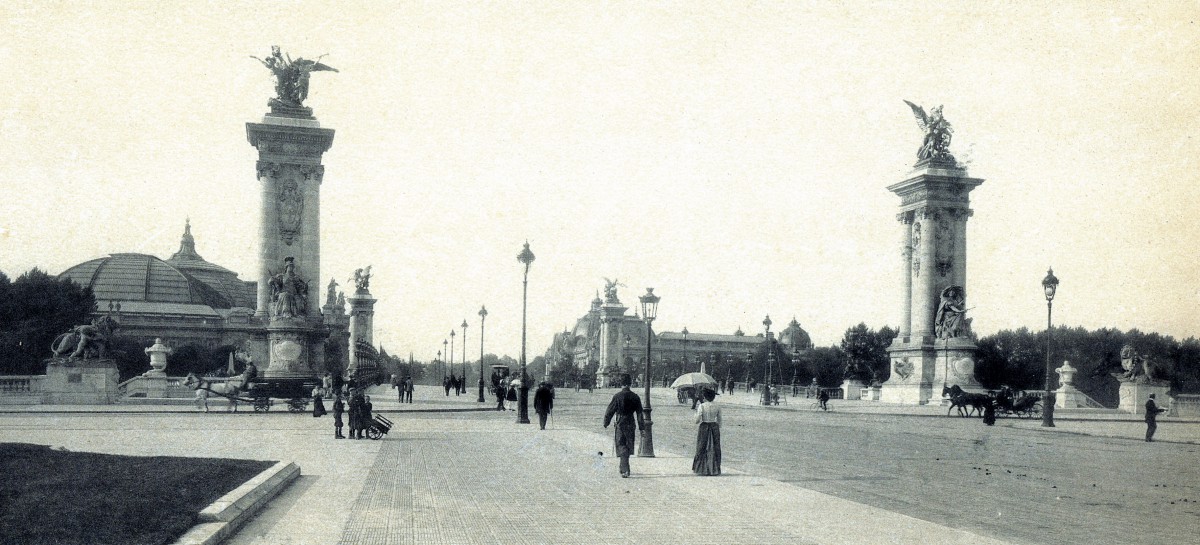
A technical success!
Engineers Resal and Alby designed the proposed bridge according to the technical requirements of the day. Rules prevented it from:
- Interrupting river traffic passing along the Seine.
- Being built with several arches.
- Masking the beautiful perspective leading to the Invalides.

Technically, the bridge was an engineering success. It includes a 6m high single-span steel arch across the Seine.
More facts
- The total length is 160 metres, and the width is 40 metres.
- The bridge has been equipped with electric street lighting since its construction in 1900.
- The bridge serves motor vehicle traffic and pedestrians.
View this post on Instagram
An extravagant, beloved bridge
This bridge ranks amongst the Parisians’ favourite bridges. By walking on it, you’ll clearly understand why. Observe the many exuberant Art Nouveau features:
- candelabras,
- cherubs,
- nymphs,
- winged horses and
- an array of sculptures (lions, cupids, water sea monsters, scalloped seashells, lizards…).


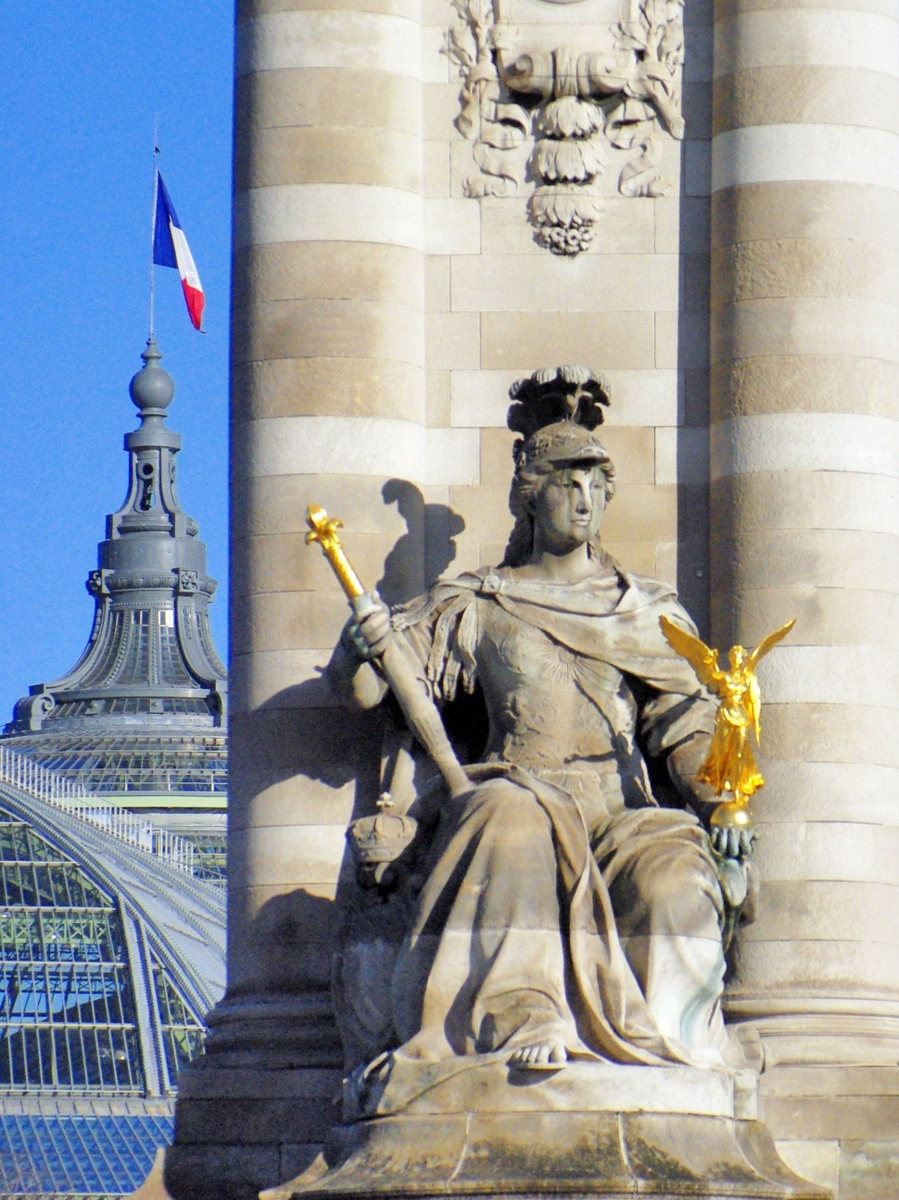
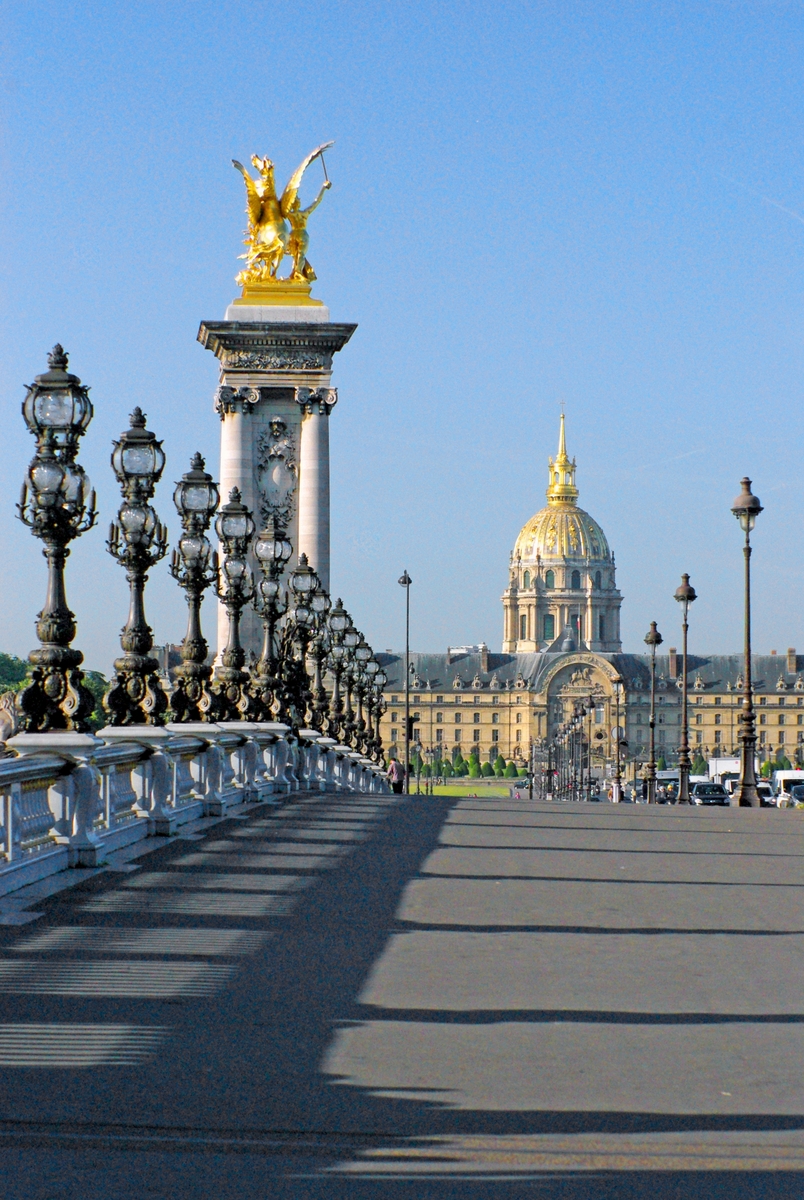
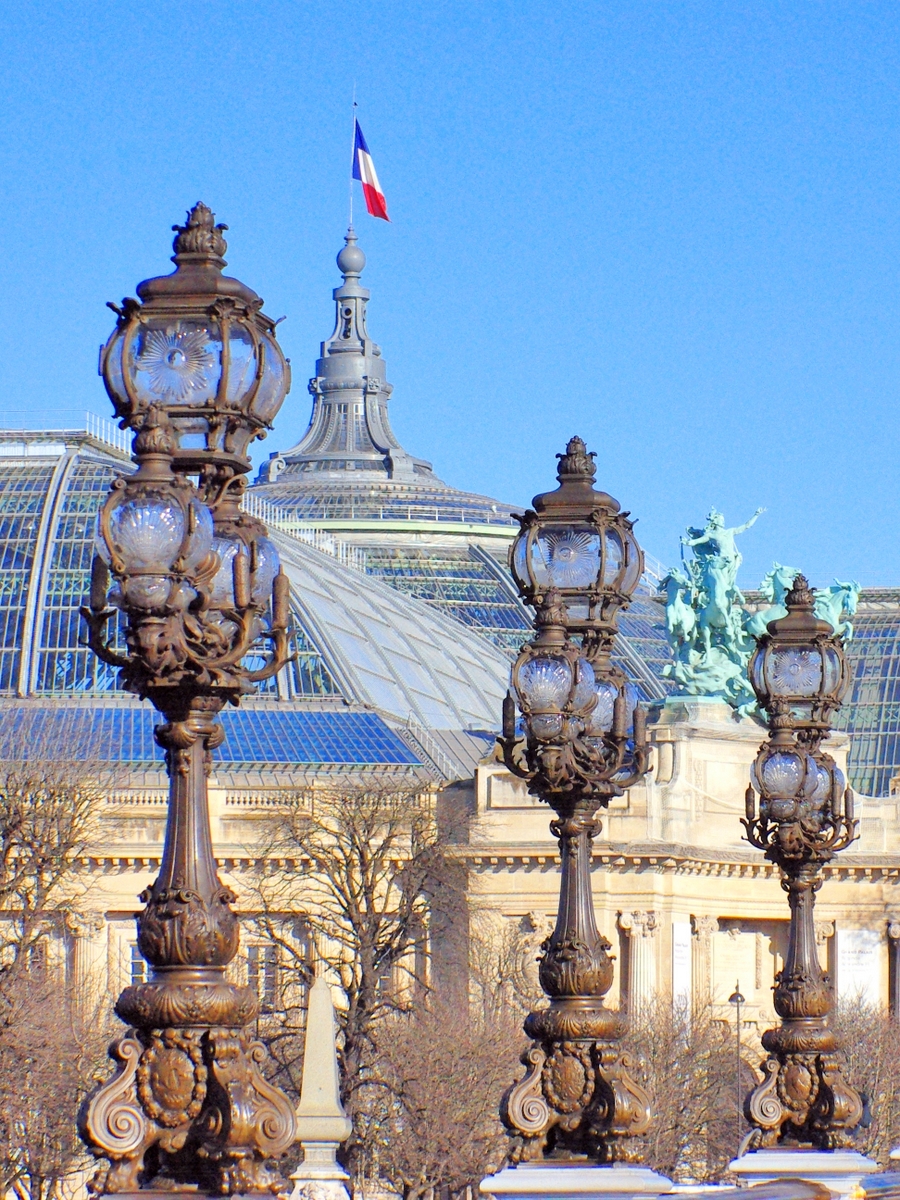
The nymphs
In the centre of the bridge, statues in beaten copper represent the nymphs symbolising:
- the River Seine on the downstream side, and
- the River Neva (in Russia) on the upstream side.
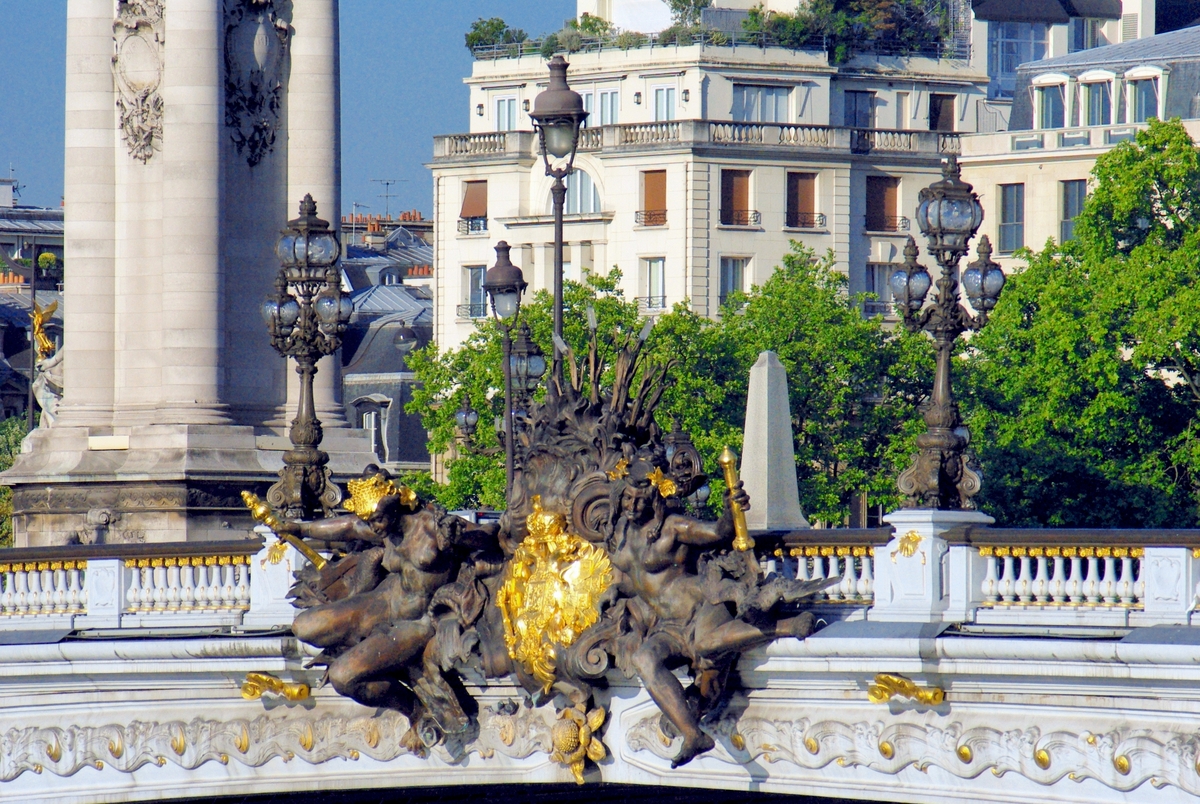
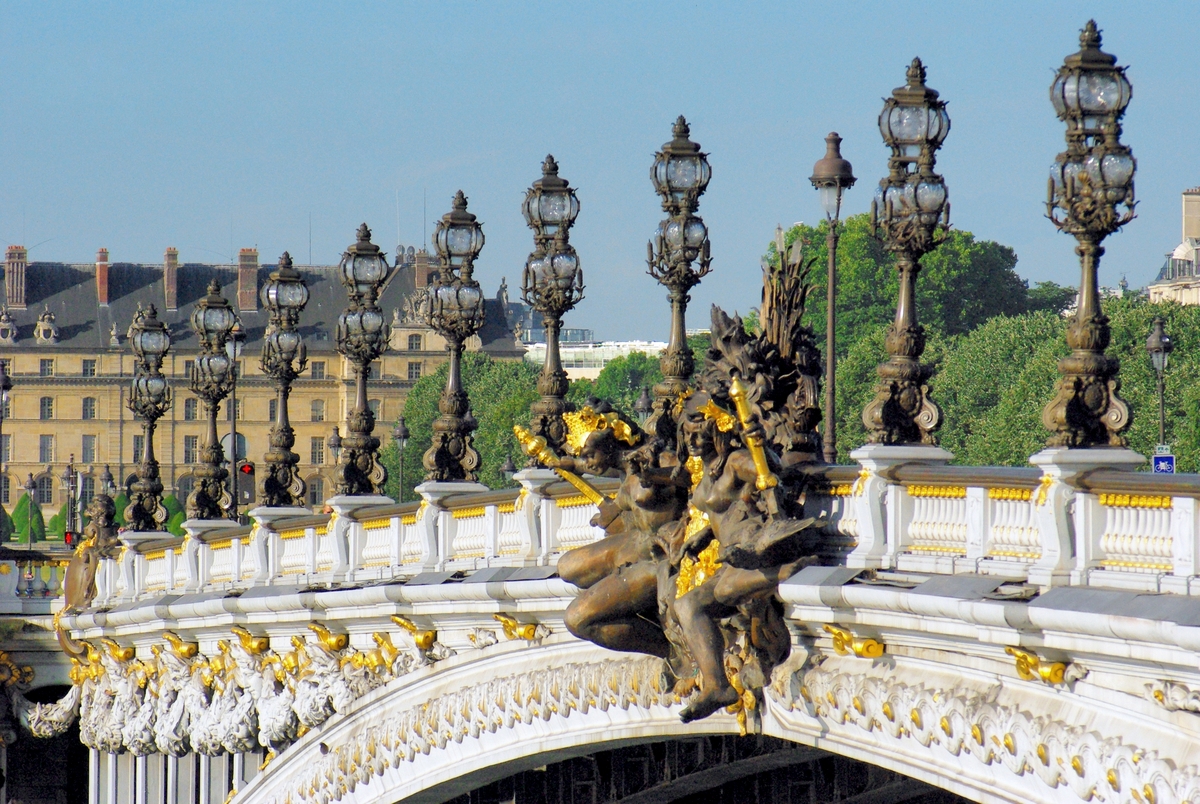
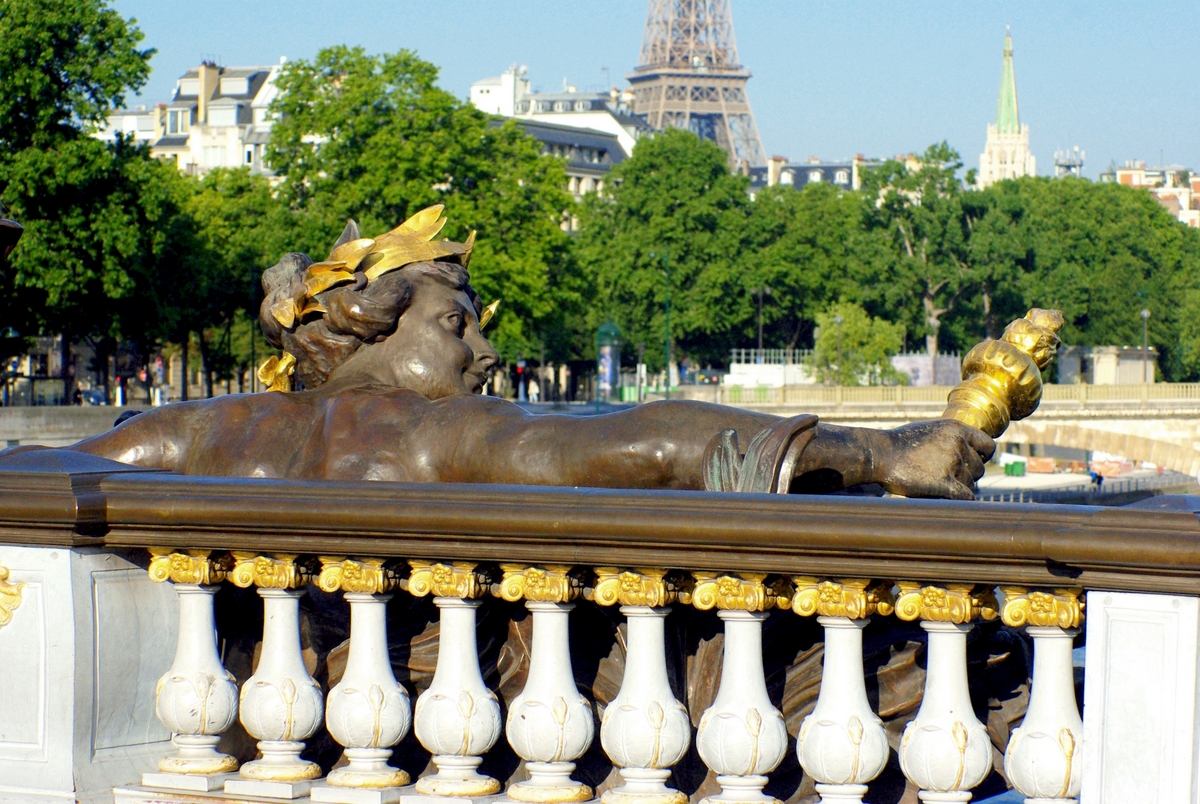
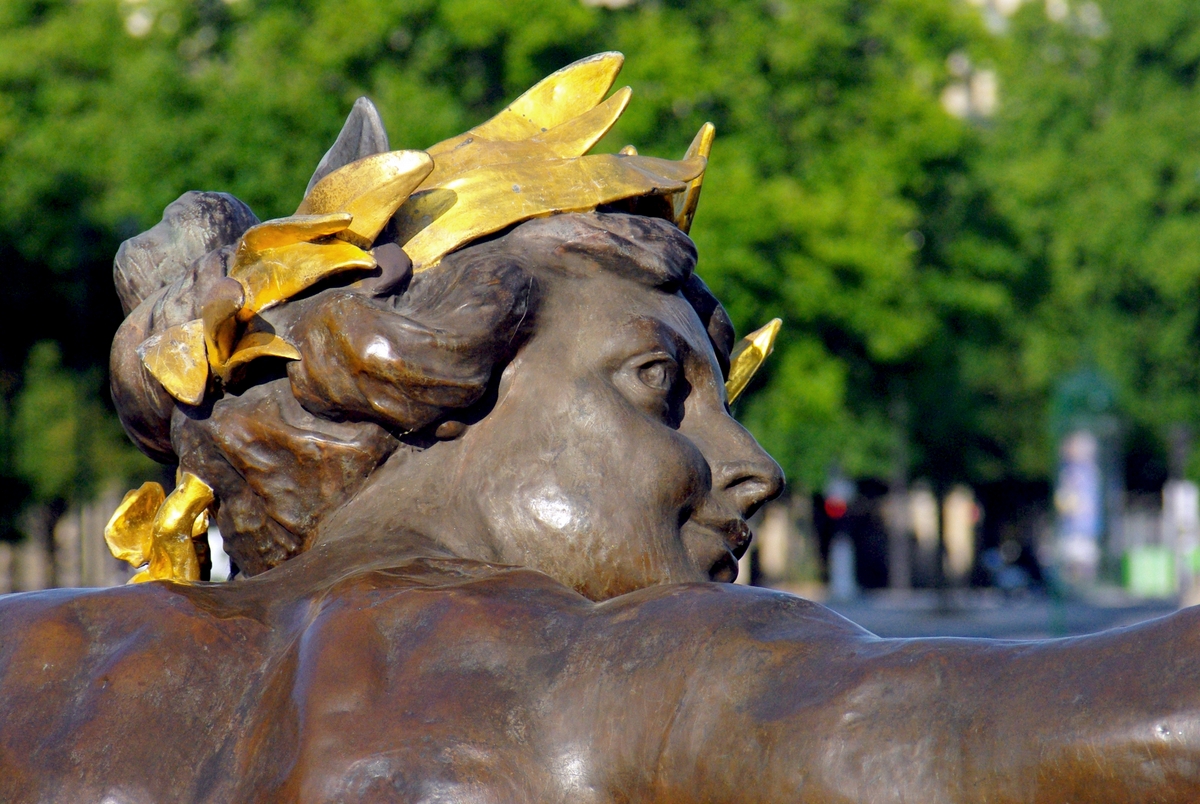
The candelabras
Thirty-two bronze candelabras decorate the bridge. The remarkable street lamps have been lit with electricity since the bridge’s construction. They are positioned across the bridge at regular intervals.

The street lamps contribute to the splendour and exuberance of the bridge, particularly at night time. But they are also beautiful to admire when not in use in bright daylight!
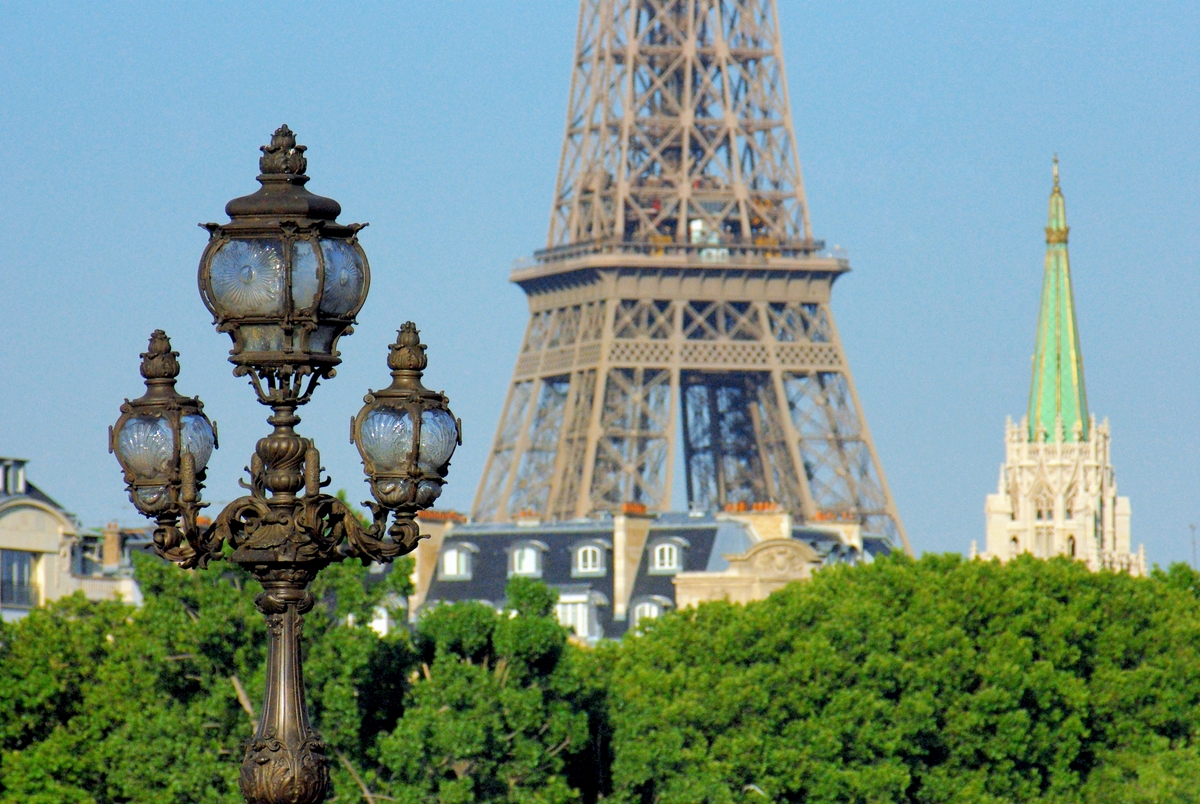


Paris’ coat of arms
Get closer, and you’ll recognise the coat of arms of Paris!
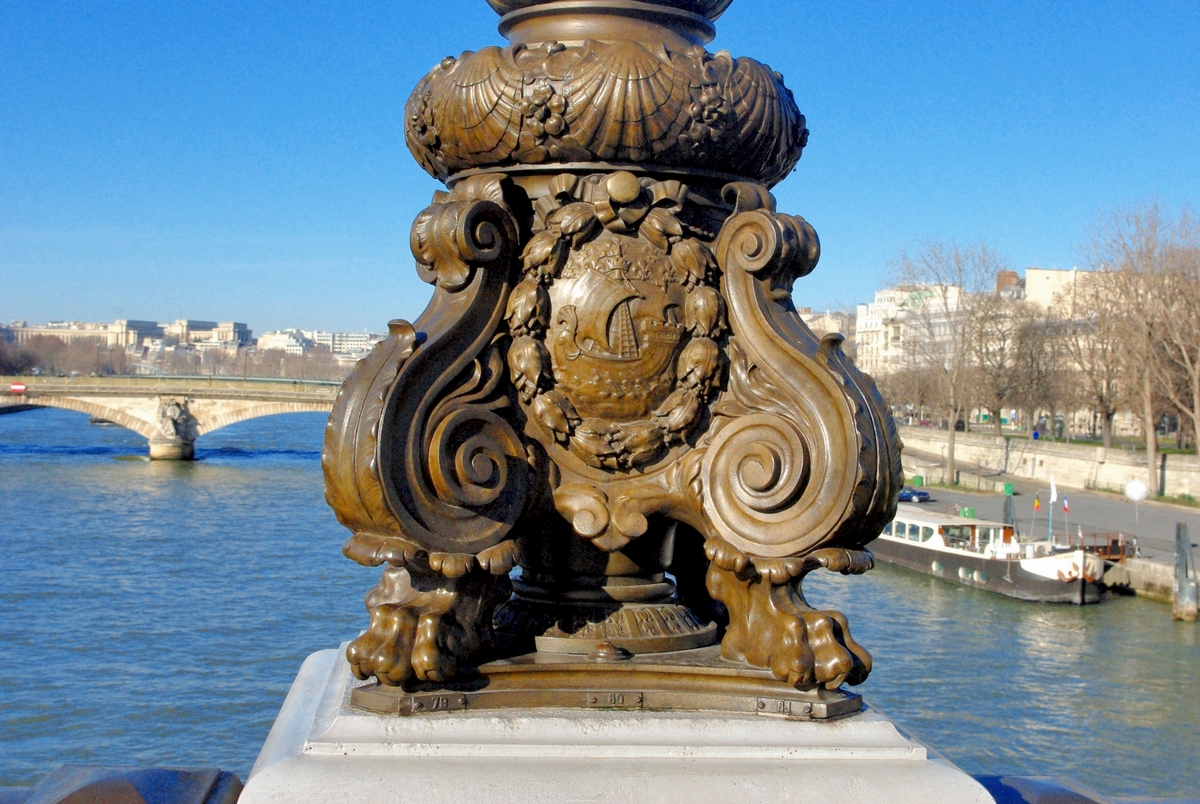

Larger candelabras at the end of the bridge
The candelabras placed towards the end of the bridge are much more oversized. They feature cherubs and sea monsters.
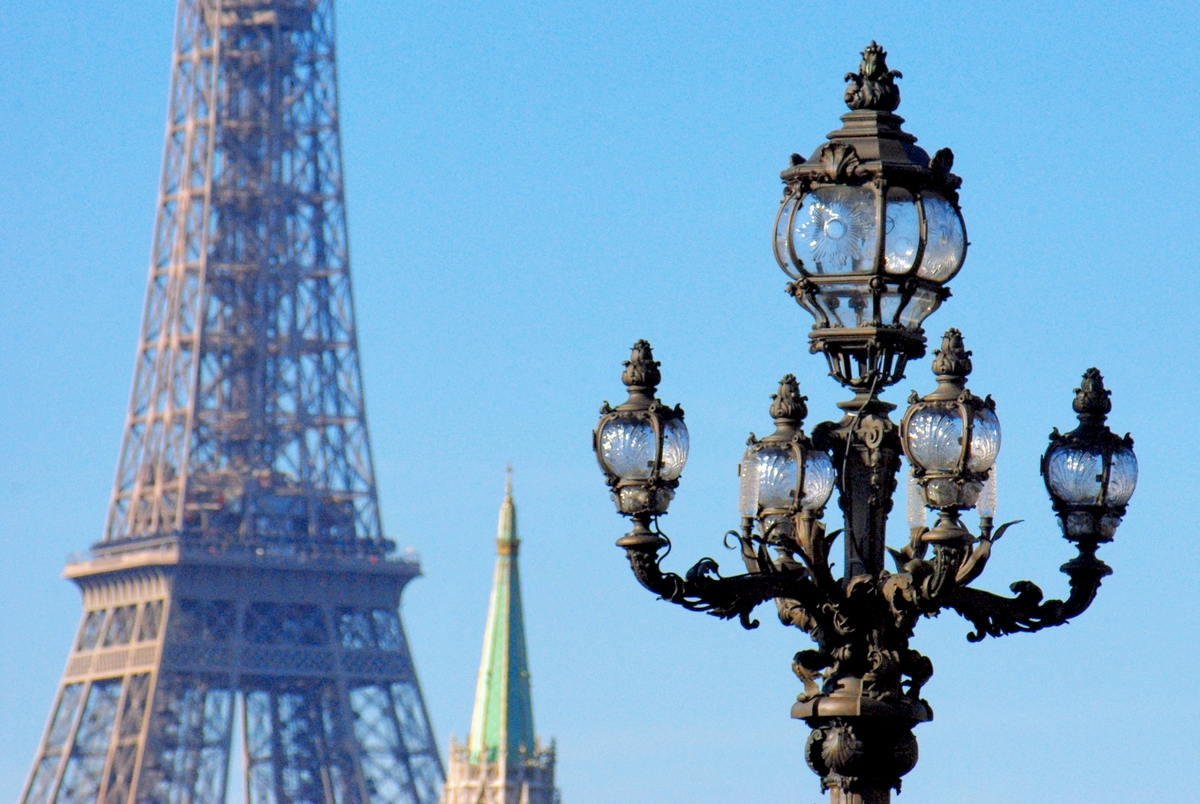
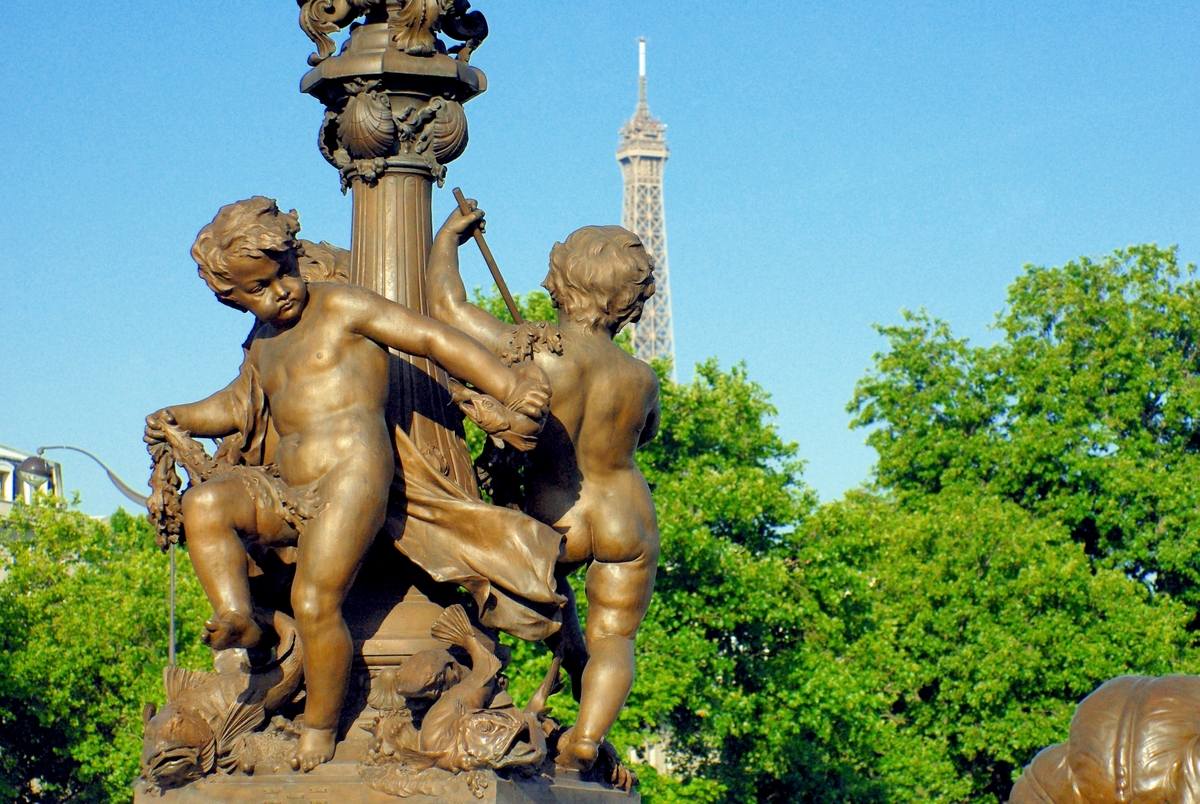

Take the time to admire the decoration along the bridge deck. You’ll find aquatic fauna and flora featured finely executed.
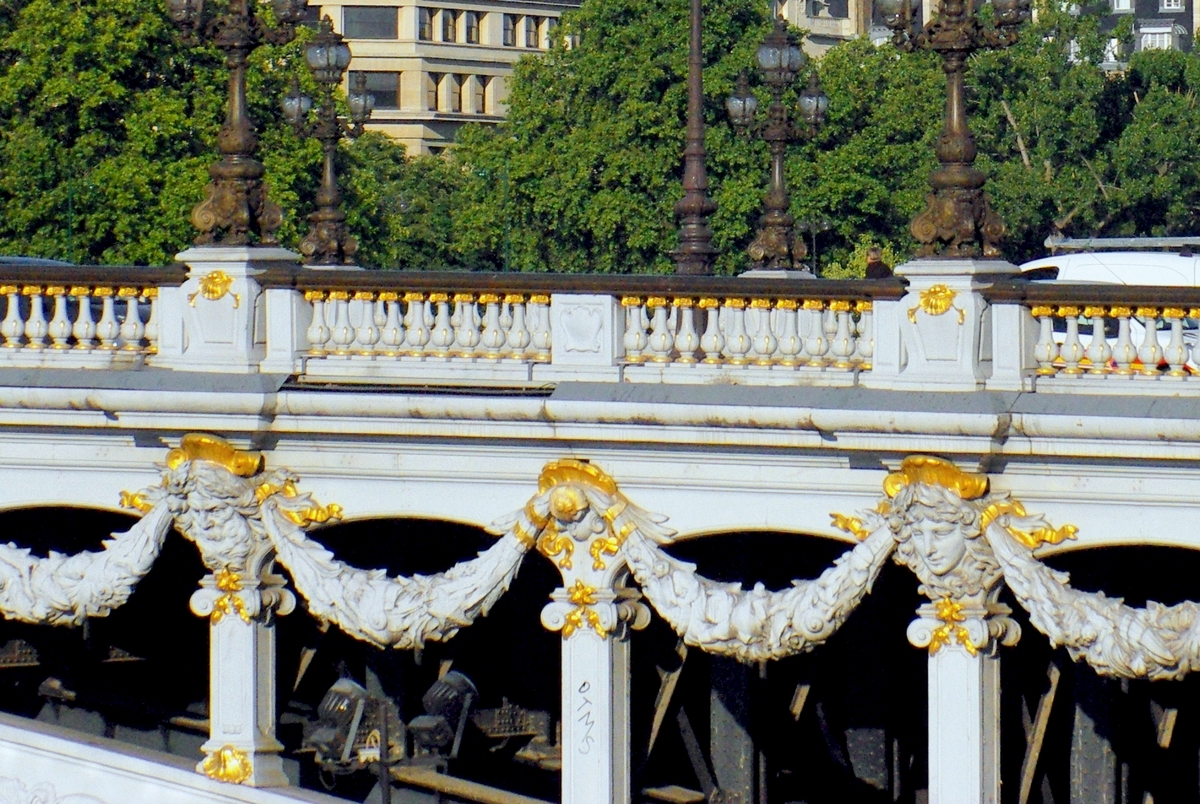
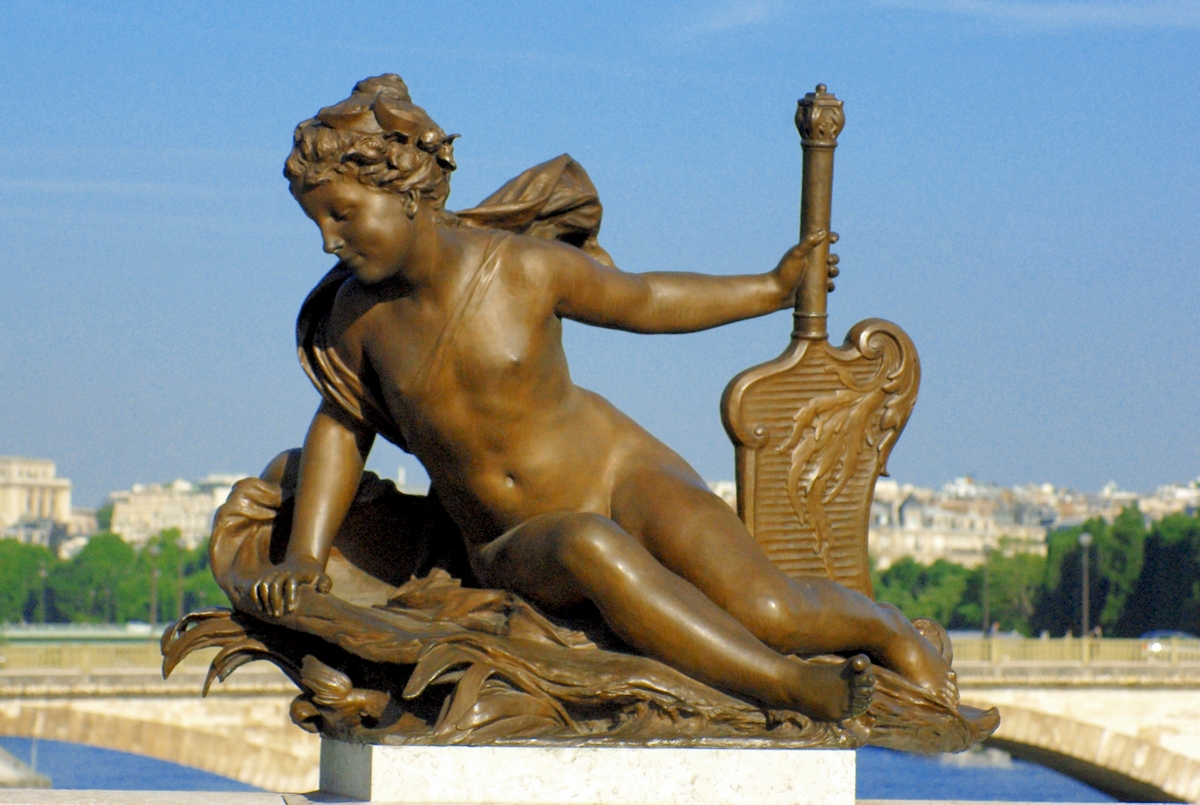
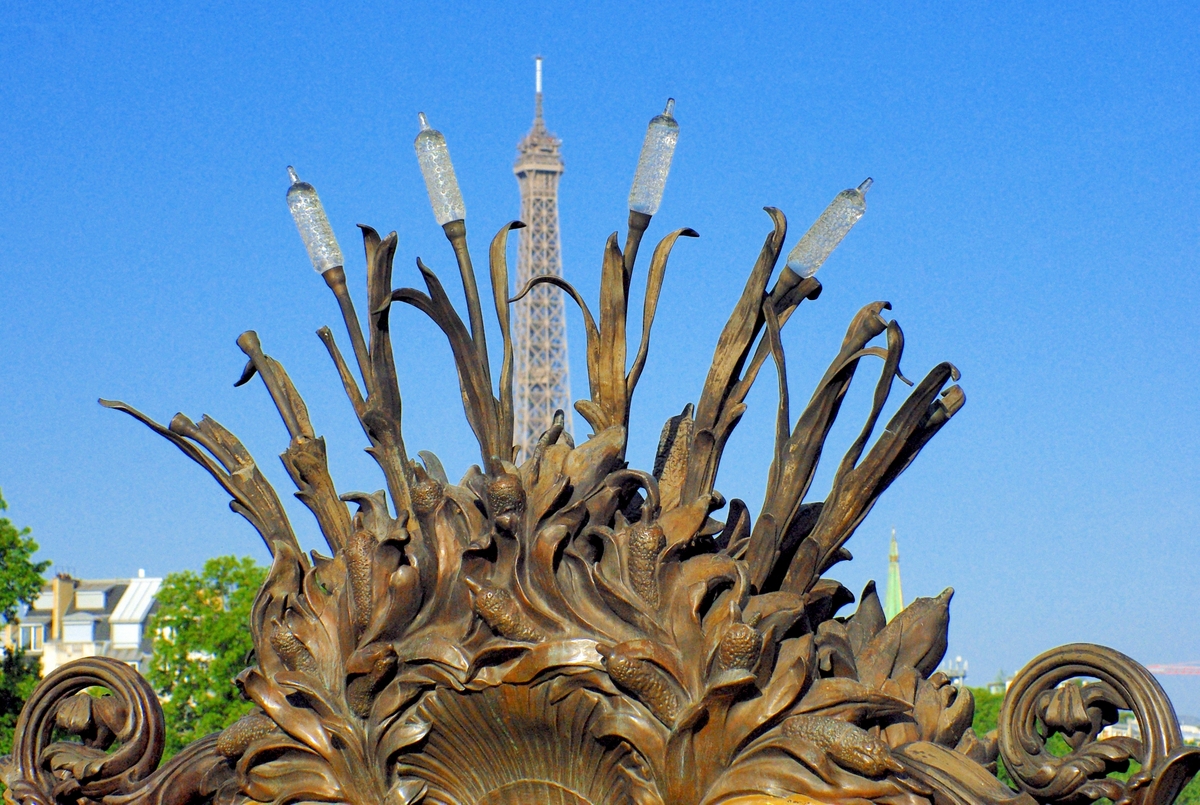
If you visit the bridge, I challenge you to find this little lizard!
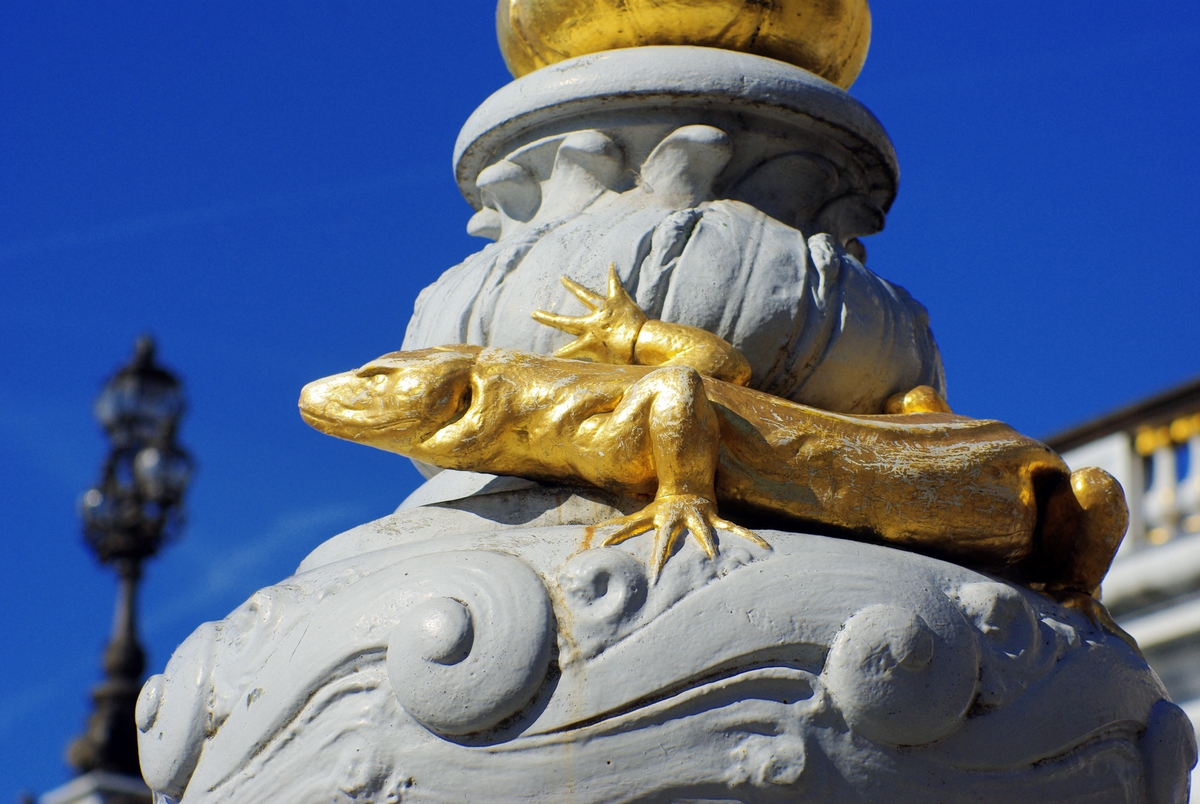
The pillars topped with winged horses
At each extremity of the bridge are two monumental pillars.
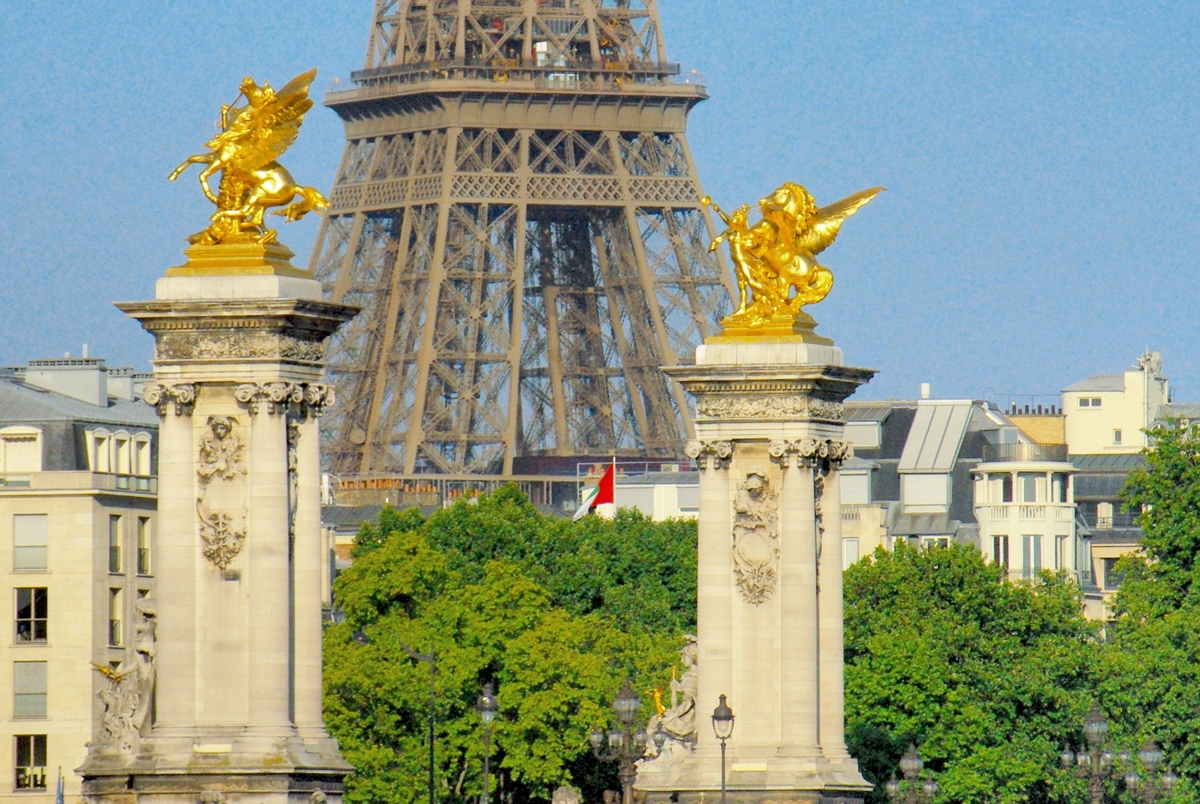
The 17 metres high masonry structures provide stabilisation and counterweight for the bridge’s arch. While not interfering with the monumental views from and outside the bridge!
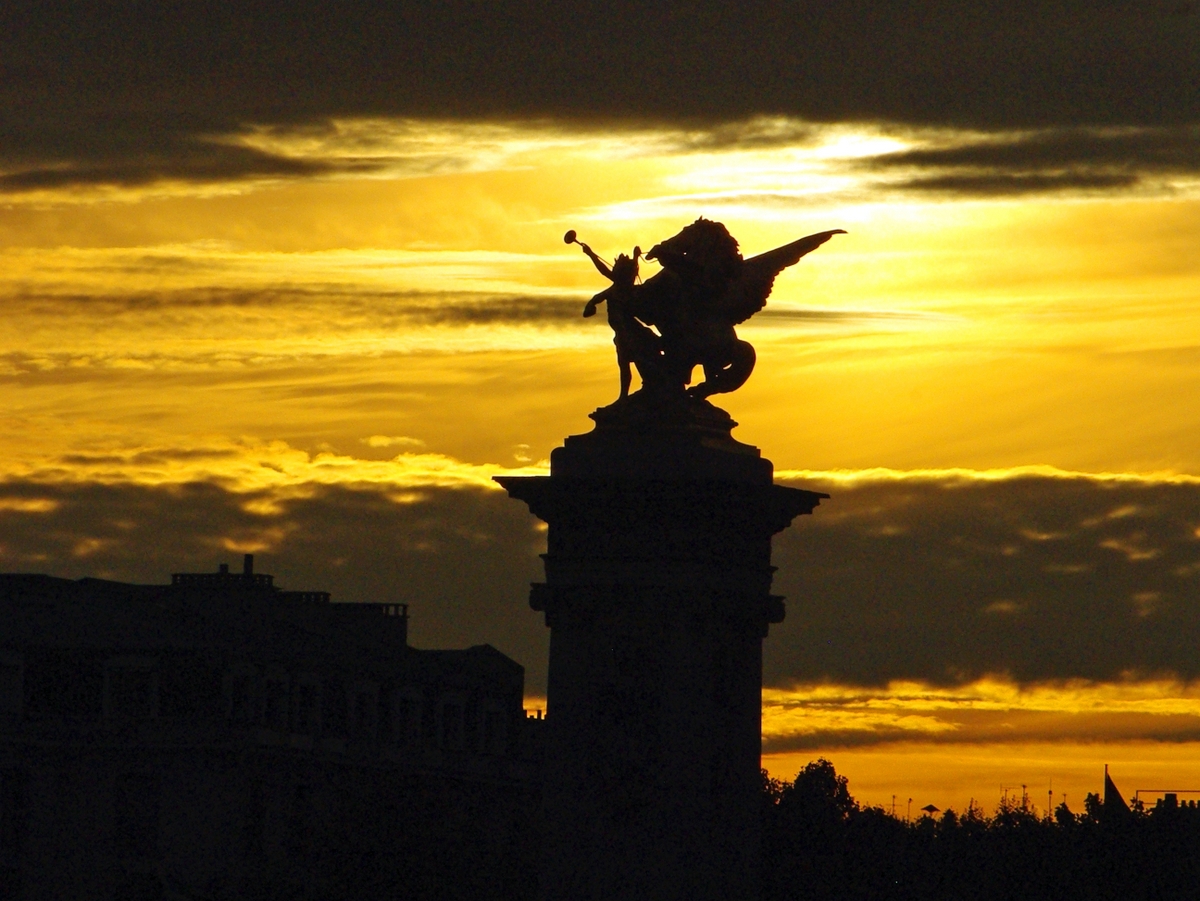
Four gilt-bronze statues of Fames bringing Pegasus to heel dominate the bridge. They were restored in 1991 and nowadays sparkle with light!

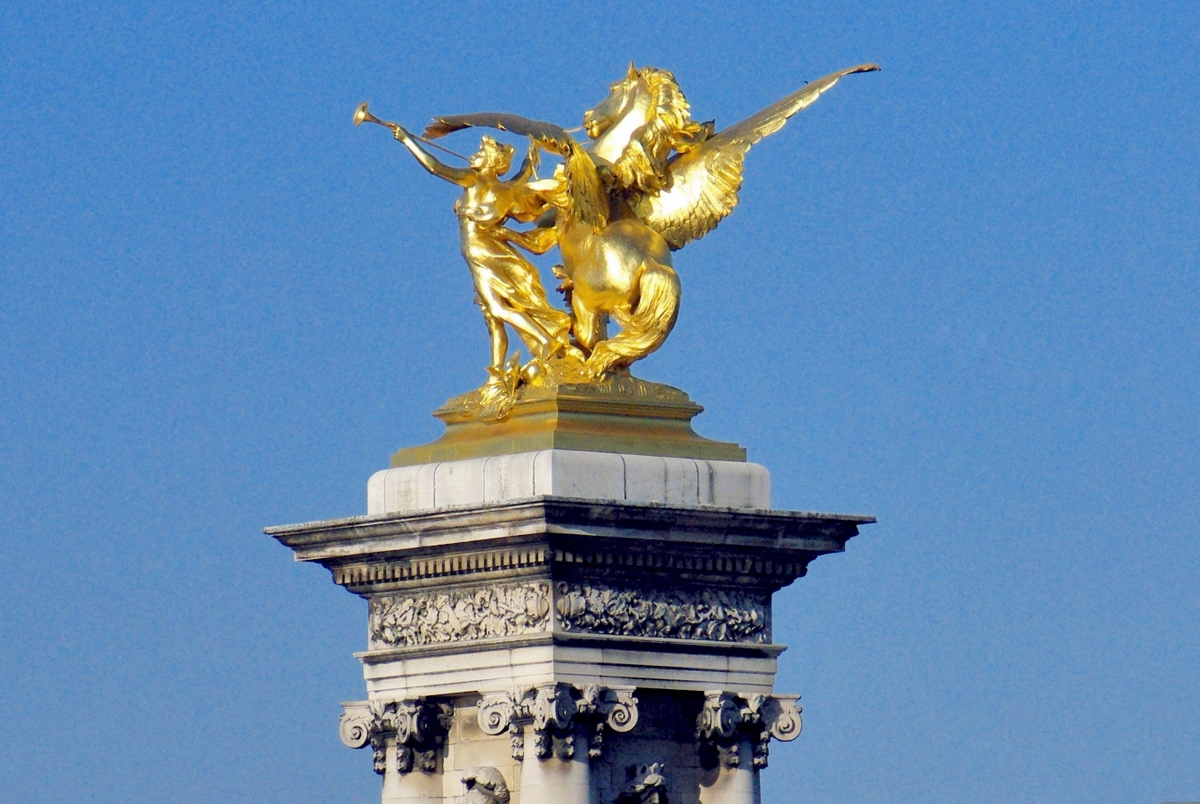
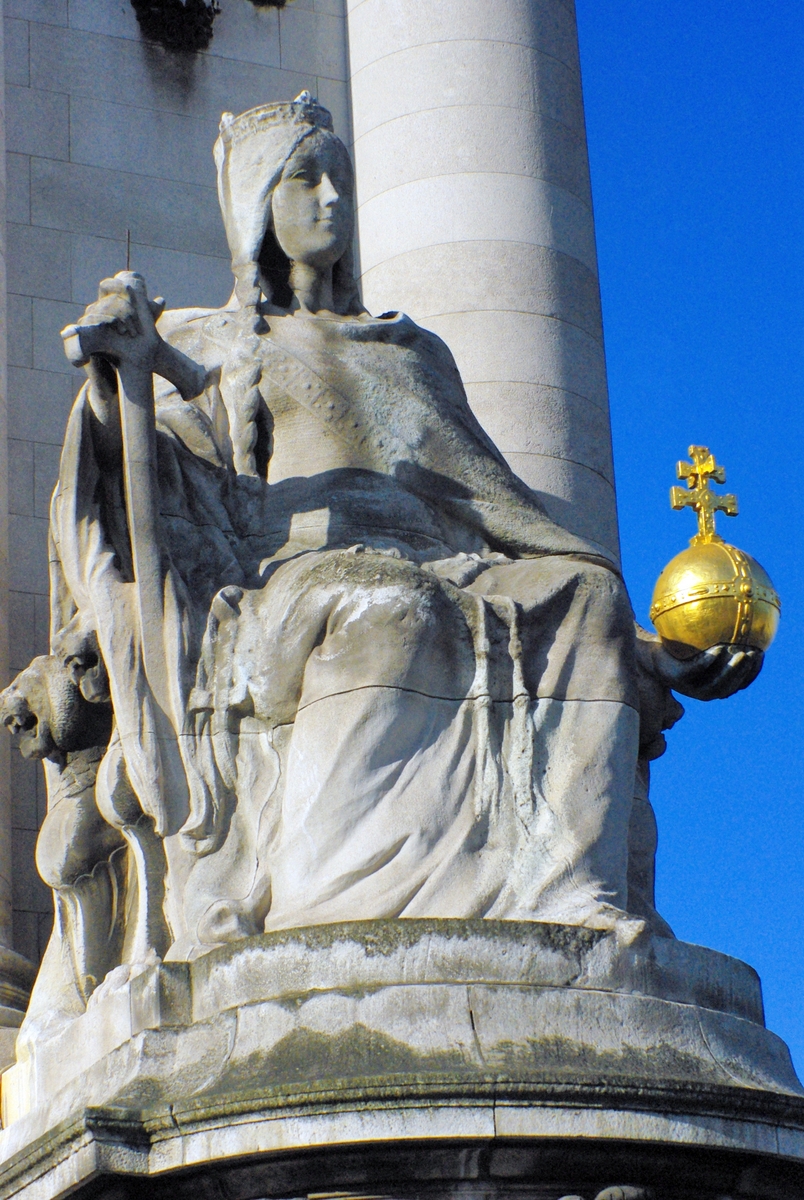
The Pegasus and Fames on the Right Bank depict Peace
Renommée des Sciences (“Fame of the Sciences”) and Renommée des Arts (“Fame of the Arts”)
At their bases, La France Contemporaine (“Contemporary France”) and France de Charlemagne (“France of Charlemagne”).
The Pegasus and Fames on the Left Bank depict War
Renommée du Commerce (“Fame of Commerce”) and Renommée de l’Industrie (“Fame of Industry”).
At their bases, La France de la Renaissance (“France of the Renaissance”) and La France de Louis XIV (“France of Louis XIV”).
Finally, at the feet of the pillars, you’ll discover groups of lions led by children and genies with fish and shells.
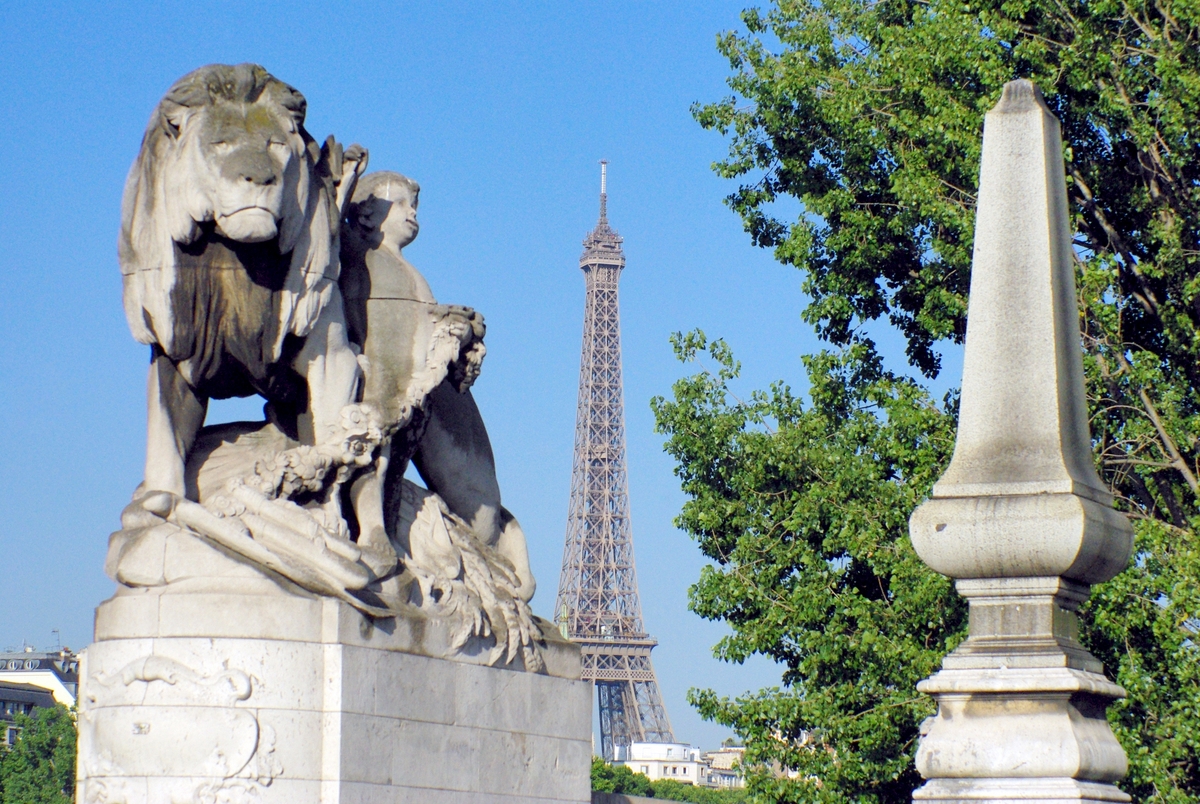
My favourite time of the day!
This bridge is beautiful at all times, but my favourite part of the day is sunset on a glorious winter day.
If you’re patient enough, you’ll be rewarded with one of the most spectacular views of Paris!
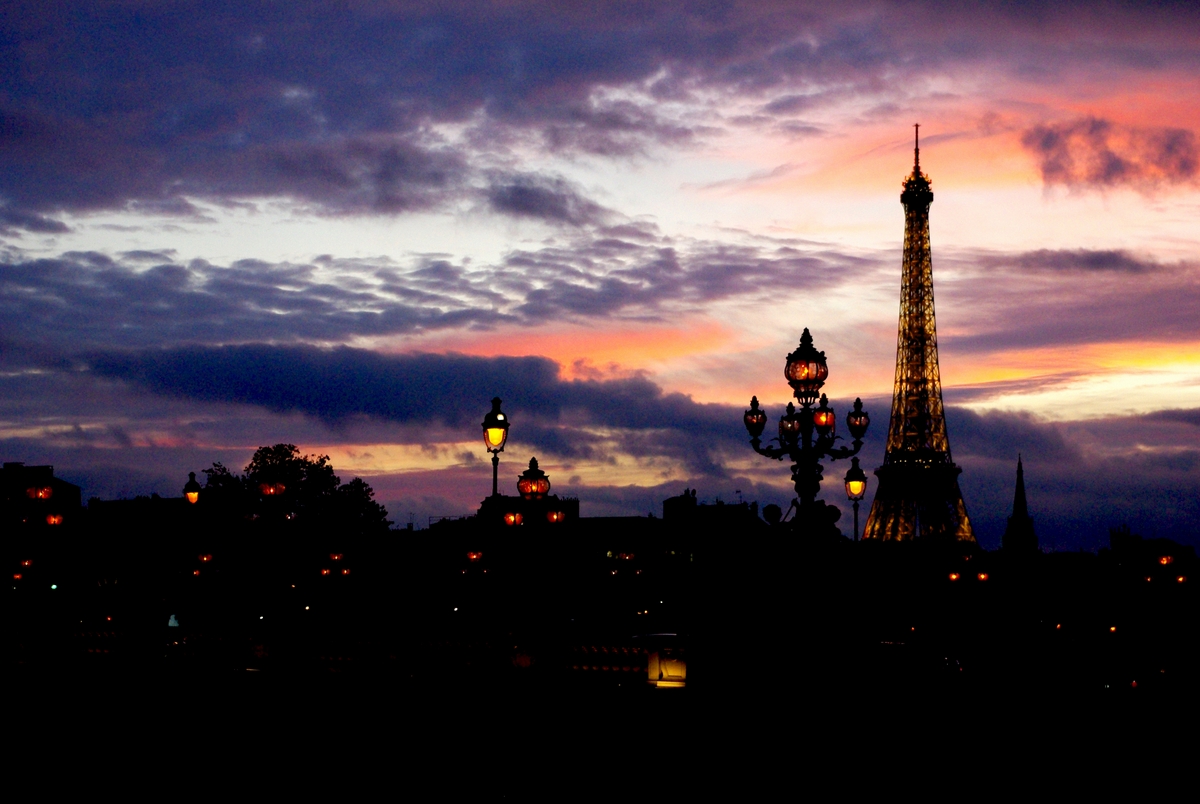
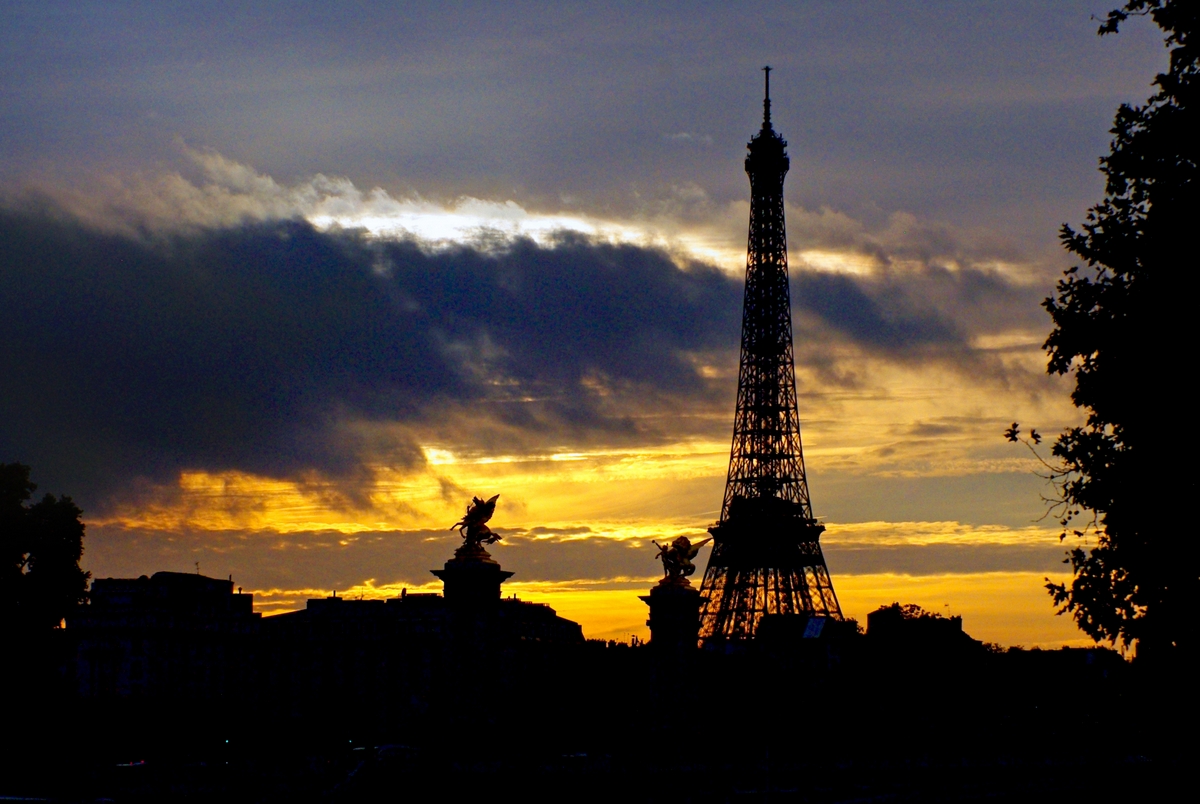
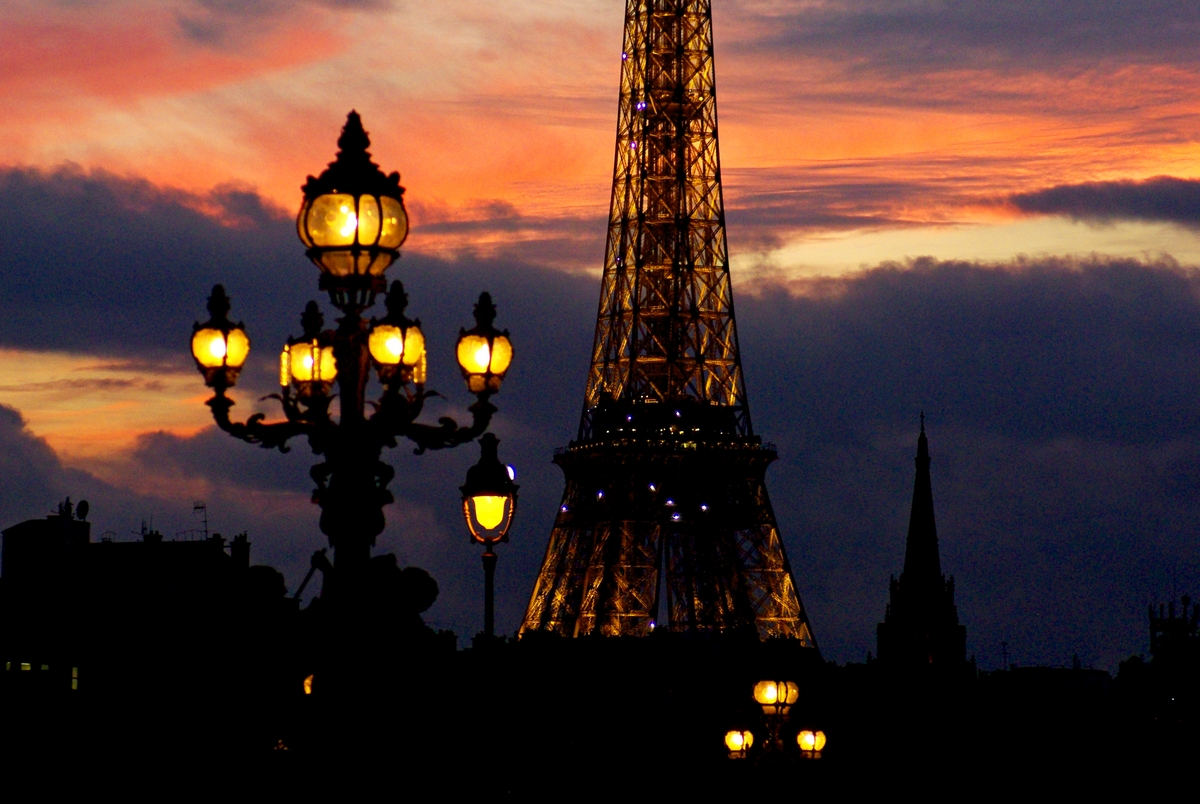
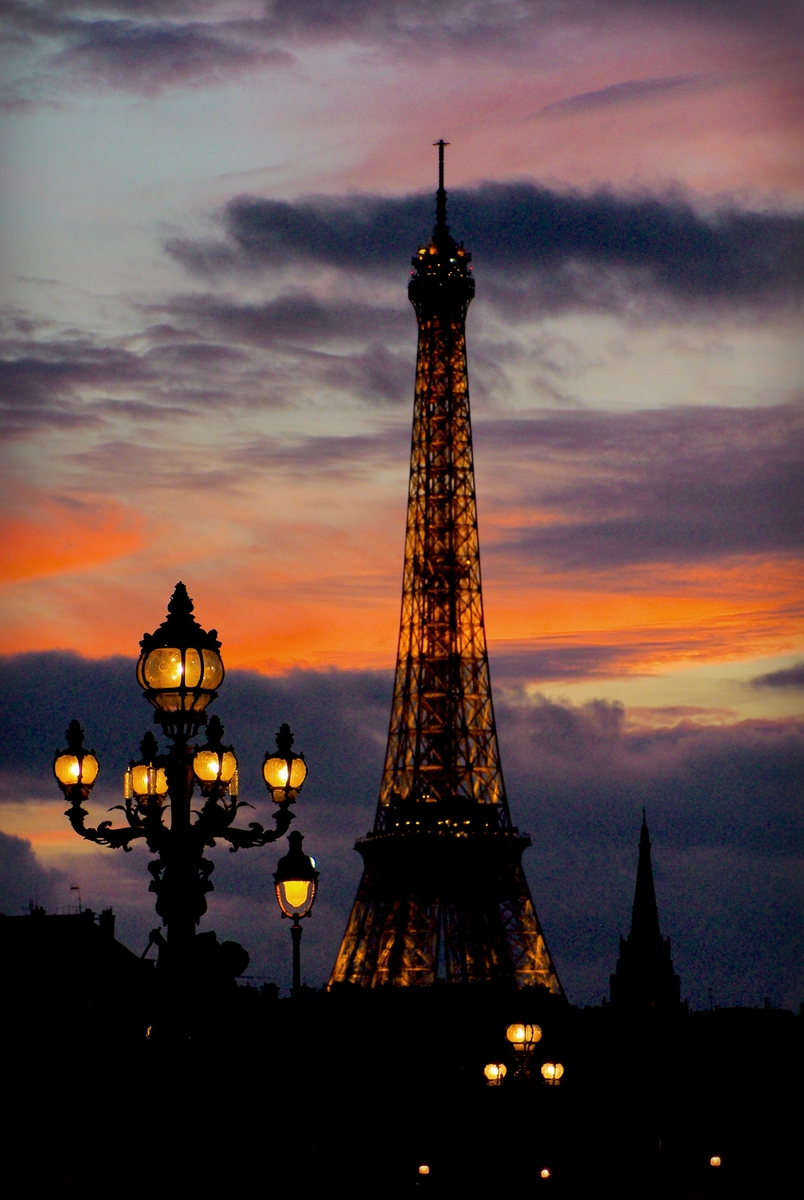
Also, a cruise on the River Seine gives you the great opportunity to admire (and pass beneath!) the bridge from a different perspective!
Book your one-hour cruise tickets online here…
The river journey starts right at the foot of the Eiffel Tower. The tickets feature:
- Instant ticket delivery
- Smartphone tickets accepted
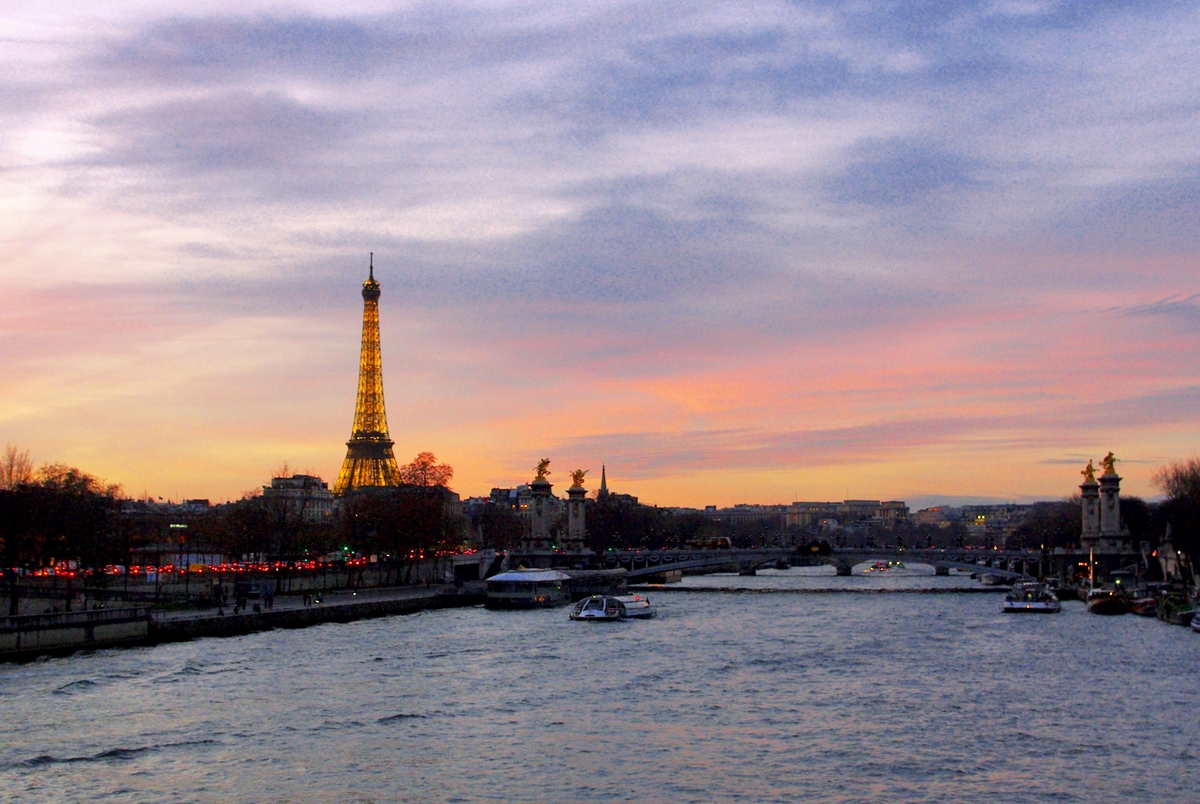
How to get to Pont Alexandre III?
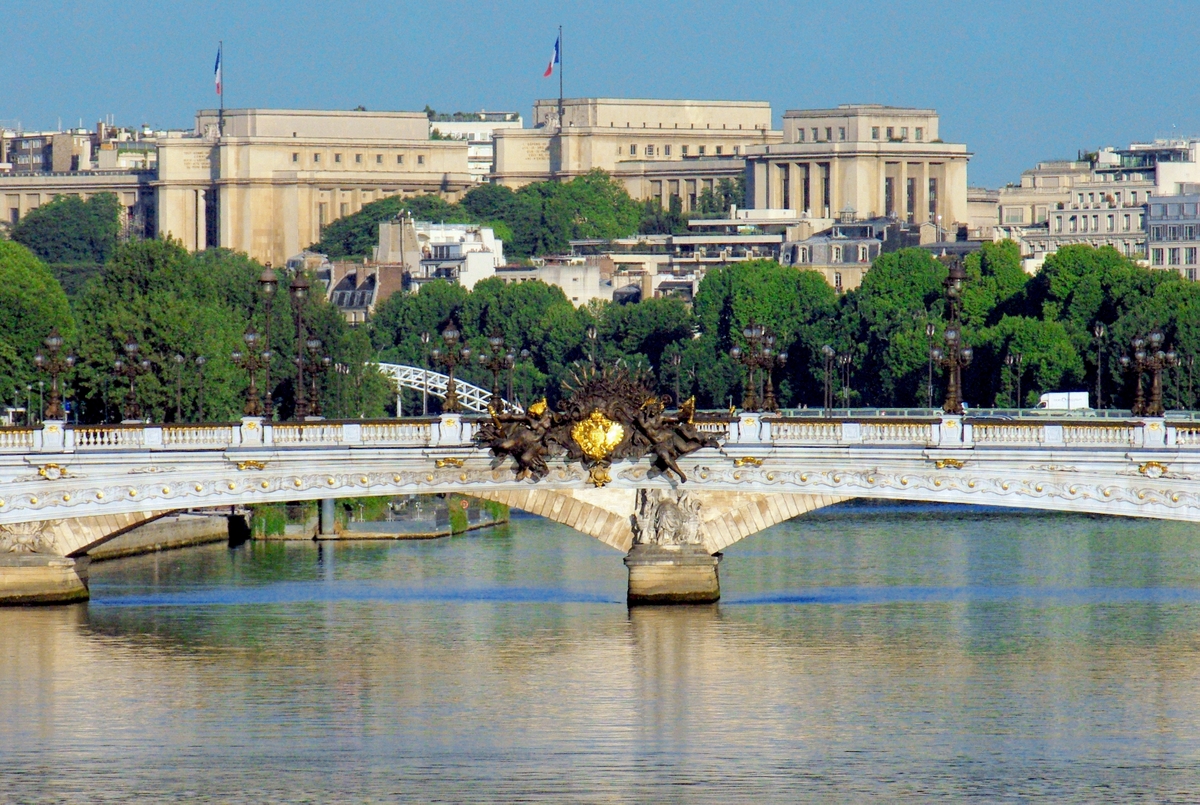
Pont Alexandre III is a very accessible bridge to see, thanks to its central location.
You can easily reach it on foot from the Champs-Elysées, the Place de la Concorde, the Eiffel Tower or the Hôtel des Invalides.
Alternatively, find your way to two métro stations:
- Invalides (lines 8, 13, and RER C) on the Left Bank
- Champs-Elysées Clemenceau (lines 1 and 13) on the Right Bank
Pin it for later:
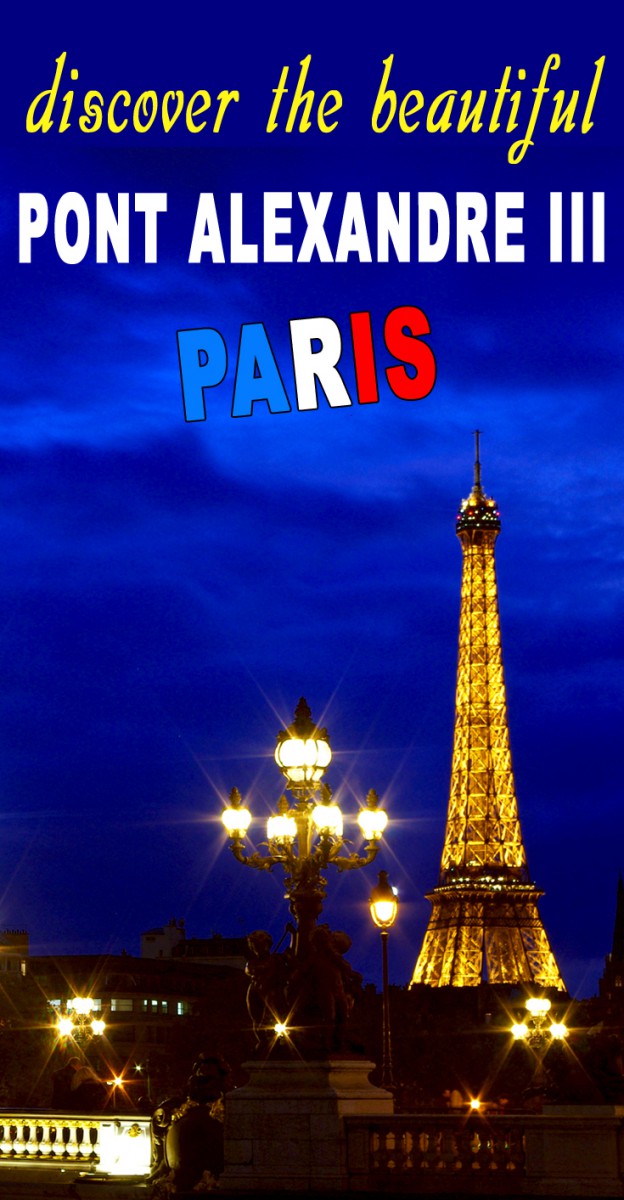




Such amazing Photos and I ALWAYS enjoy your emails!!!!! Thank you so much!
Cindy
Thank you Cindy! Always a pleasure 🙂
A great article on MY favourite bridge in Paris. I have spent countless hours checking out all the amazing details and I can’t wait to see it again. Thanks Pierre.
You’re welcome! Thank you for the lovely comment 🙂
Hello,
I’m french and I am doing a research project on the Pont Alexandre III. Unfortunately, I am having a hard time finding documents and informations on the bridge’s restoration. Where did you find informations on the 1991 restauration ? Have you find any other restaurations ?
Bonjour Sophie ! Alors comme vous êtes française, je vous réponds en français 🙂
Pour les travaux de 1991, j’ai trouvé plusieurs sources :
– http://www.reinventerlaseine.fr/fr/sites/1286-culee-droite-pont-alexandre-iii-75.html et
– http://blogpontsdeparis.blogspot.com/2011_06_01_archive.html?view=classic
Le pont a également fait l’objet de restaurations en 1998 en vue de son centenaire.
J’espère que ces infos vous seront utiles ! 🙂